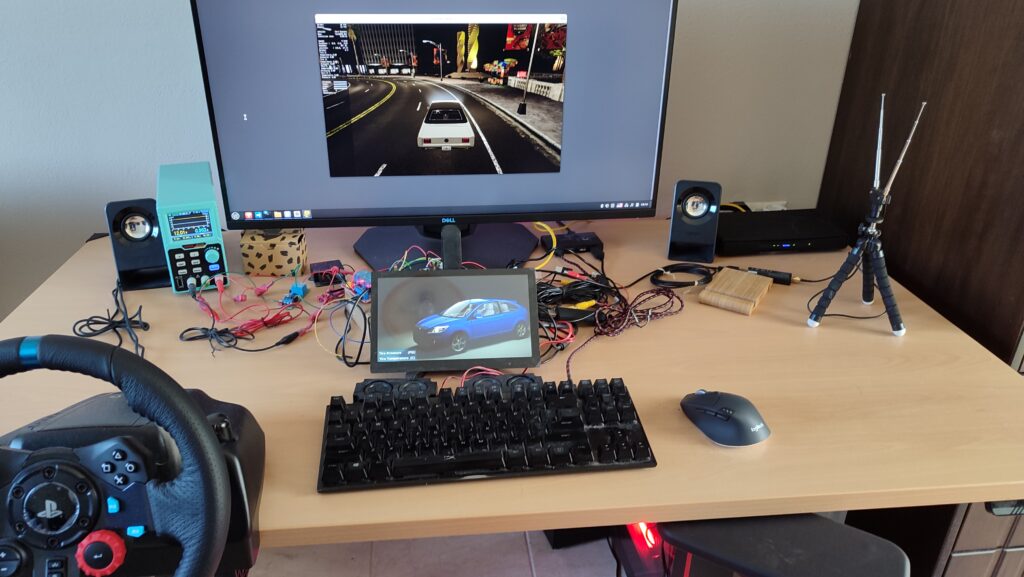A few weeks ago, I started exploring new ways to enhance the infotainment by using vehicle data from sources like the OBD-II, including speed, engine RPM, and more.
So far, when I wanted to get vehicle data, I had to board on the car and measure the voltage of some wires. The most straightforward approach to get the new data, would be to get in the car, connect the laptop to the OBD-II, drive the car and record data on the laptop. However, this is expensive and dangerous.
Bringing Simulation into the Picture
This is where simulation comes into play!
Having worked at engineering companies like BETA CAE, where I developed simulation software, I was already familiar with various simulation techniques like CFD. However, this time, my goal was different – I needed real-time, real-world vehicle data while driving.
Several simulation platforms exist for autonomous driving and ADAS development, including NVIDIA DRIVE Sim and the open-source CARLA simulator. We chose CARLA because it’s open-source, widely adopted in the industry, and comes with excellent documentation, making it ideal for our needs.
How We Integrated CARLA
Although I’m not an expert on CARLA, the basic concept is straightforward: a main vehicle, potentially with some sensors and cameras attached on it, drives in a simulated town with buildings, roads, other vehicles and pedestrians. The simulation runs on a desktop computer, providing realistic vehicle data.

For our use case, we took a simpler approach. The computer running CARLA is connected to the infotainment system (a Jetson Nano in our case). Rather than simulating a complex urban environment, we drive a single vehicle in an “empty” world and only get the data we need like speed, engine RPM etc.

Conclusion
This integration marks a major step forward in our workflow, reducing costs and risks while opening the door to new features and innovations. Plus, with the G29 gaming steering wheel supported out of the box, work has never been more fun!
